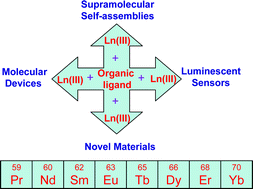Recent advances in the formation of luminescent lanthanide architectures and self-assemblies from structurally defined ligands†
Abstract
This article gives some highlights of the recent advances in the development of novel lanthanide based complexes, conjugates and self-assembly structures formed from the use of organic


 Please wait while we load your content...
Please wait while we load your content...